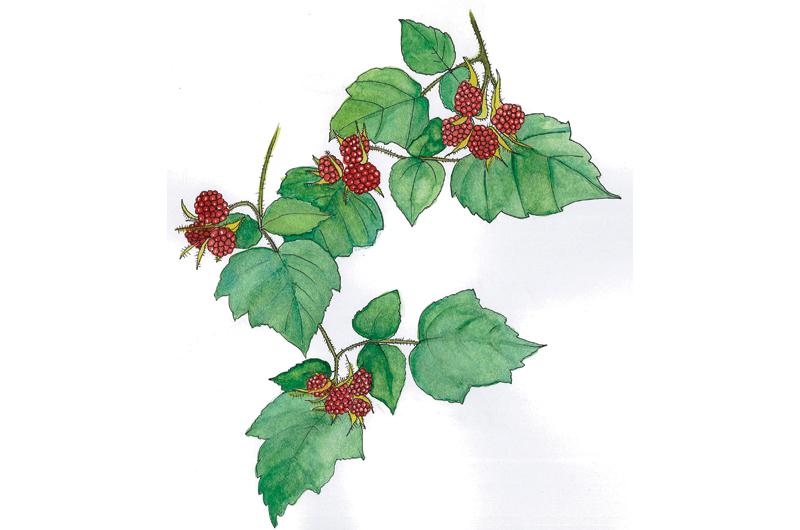Wineberries taste like wineberries, true, but they don’t taste like wine. A native of Asia, the scarlet fruit looks and tastes similar to a raspberry, only slightly tarter and juicier, and was in fact introduced to the United States in the 1890s as breeding stock for hybrid raspberry varieties. Easily spread by seed, sucker, and cane, the wineberry went wild and rogue. Today it gets a bad rap for its ability to overcrowd ecosystems. But those who stumble upon a thicket of free, delicious berries aren’t likely to complain.

Where to look: An ideal pursuit for novice foragers, wineberries have no poisonous lookalikes and are easily identifiable. Search in open woods, meadows, roadsides, and wetland edges for canes covered in reddish-purple hairs. The fruit itself is brighter, shinier, and smaller than a raspberry, and sticky to the touch – the result of the hairs that cover the canes and calyx. When picked, it leaves behind a telltale orange cone.
How to use: Wineberries stay fresh for only a few days once picked, but freeze especially well. Add the berries to smoothies or salads, bake them in desserts, make them into jam or sorbet, or eat them plain.
Snozberries? Who ever heard of a snozberry?
– Veruca Salt






